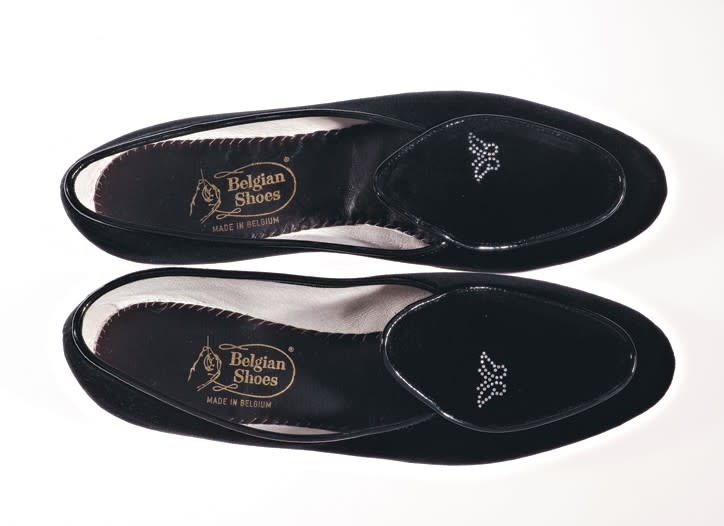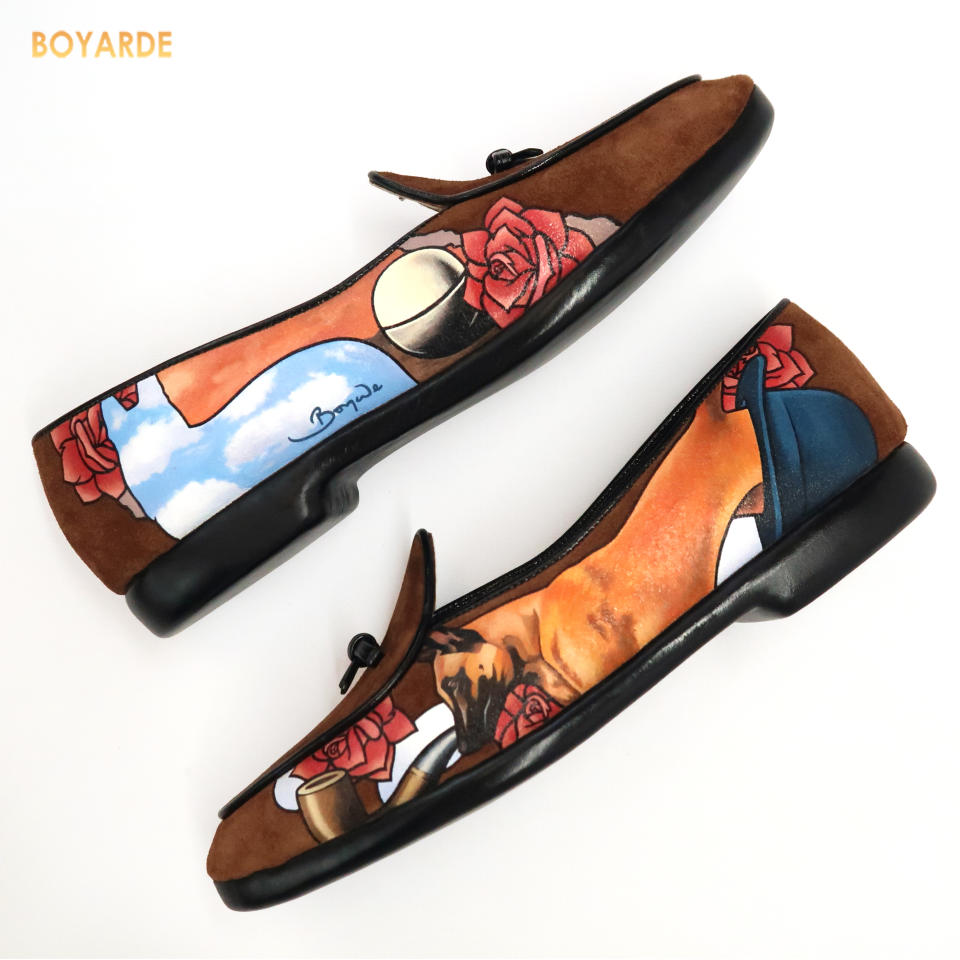Belgian Shoes Find Next-Gen Fanfare for Its Underground ‘Cool’

In February 2020 just before the pandemic’s start, Belgian Shoes — the highfalutin nook of a store selling hand-stitched loafers on East 55th Street — decided to unveil its full-scale renovation.
Little did its new owners, sisters Barbara, Vanessa and Sarah Vanacker, know that life would soon change forever. But in the time since, that makeover — which did away with kelly green carpets, ’80s drab wood fixtures and neon lighting in favor of sleeker and more luxurious treatments — has paid dividends.
More from WWD
The brand has since found popularity among a new cohort of shoppers — ushering in a next-gen era for the pointy, soft-sole loafers crowned with tiny bows.
While a longtime favorite of uptown Ladies Who Lunch and straight-laced financiers, the shoes are now finding a strong following among downtown-type women. They’re on artist and consultant Mirabelle Marden; integrative holistic health coach and loungewear designer Daphne Javitch; Desert Vintage co-owner Salima Boufelfel; fashion designer Batsheva Hay, and countless others who are considered quietly in-the-know.
The rush has left Belgian Shoes and its limited production of 8,000 pairs per year often sold out of styles. And that comes as the brand’s owners refuse to sell online or wholesale — saying factory output is what it is, and that they are only looking for a specific type of growth: reaching a new audience to secure the brand’s long-term future.
“We do see a lot of new customers coming in — a lot of women coming in to try a pair for the first time. We still have a very loyal customer that are returning, too, because everyone is returning to New York — everyone can travel again. Finally, we seem to have both [audiences] now, which is why it’s so busy,” said Sarah, speaking on behalf of her sisters.
“A lot of people are asking us, ‘How come you don’t open a store in Dubai or Japan?’ and I think it would take away from the business in New York — that’s where our base is and we want to keep it that way,” she added. “We are not looking to sell everywhere, we are keeping it really exclusive. That’s the main reason we always stand the test of time. We’ve been through so many things in the past — the financial crisis, a war, a pandemic and we are still going strong, and the main reason is we stick to the business as it is now.”

Thomas Iannaccone
Longtime Belgian Shoes general manager Pana Diamantopoulos said that Belgian’s new customer is a, “broad audience.”
“We have a lot of people from financial institutions but it’s always also this art following: people in cinema, models, painters. It’s more of this cool club following [and] people want to be a part of it because they learn about it from a friend or a boss. It’s within a certain circle,” she said.
In 2019, the Vanacker sisters purchased the brand — which was founded in 1955 — when the nephew of Belgian Shoes founder, legendary merchant Henri Bendel, passed away. But the brand was in their blood — their father Georges owned the factory that Bendel had long contracted as their exclusive production partner. So for them, it was just a matter of taking the brand in-house. The sisters remain based in their native Izegem, Belgium, where the brand’s factory is located.
“We keep it the way it is — we don’t feel like we need to make new models. Not everyone knows how to make these shoes — we are the only ones, so we will focus on that,” Sarah said.
But some things do change — like Belgians’ recently renovated flagship store. And prices, owing to the current inflationary climate, have gone up slightly — from the mid-$400s to an even $500. And the sisters are regularly attending material and leather fairs in Europe to source new fabrications that can roll-out in limited-edition runs, which in their mind could make Belgians feel all the more collectible.
Its famous “Midinette” style is offered for men and women in a rainbow of velvets, calf leather, embossed lizard and ostrich skins, linen, suede, metallic, patent leather and pony hair. The company’s now exploring additional woven, suede and pebbled leather finishes — along with colorways that can be suitable for weddings or wedding parties.
Said Diamantopoulos: “We are hoping to incorporate newness every six to eight months, which would also come with a discontinuation of certain styles.”
Long wary of collaborations, the Vanackers are starting to consider different modes of partnership in order to drum up additional hype. On Friday, they announced a project with Boyarde — a London-based arts firm that paints on luxury goods for a customizable look.
According to Sarah: “We are very picky about our projects. A lot of people are asking to do a project and Boyarde felt like it really fitted with our brand.”
Customers can purchase a pair of Belgian Shoes, which will then help facilitate communication with Boyarde for further customization. Boyarde’s art selections for Belgian Shoes display influence from the Belgian artist René Magritte.
“We always want to sell more but not in masses,” Sarah said. “We are not looking for mass production, but we are definitely happy with the way business is going right now — a lot of new customers are finding us and it seems to be working very well.”

Courtesy/Belgian Shoes
FOR MORE FROM WWD.COM, SEE:
Fast Cars and Big Money: Fashion’s New Formula 1 Obsession
Pyer Moss Releases First Handbag and High-heel Designs
Crocs Pinpoints Sandals as Next Major Growth Driver
Sign up for WWD's Newsletter. For the latest news, follow us on Twitter, Facebook, and Instagram.

